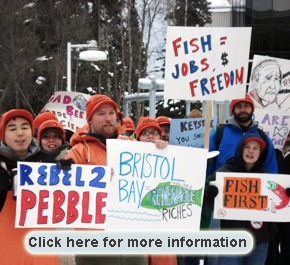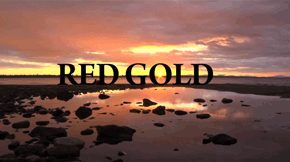Bristol Bay Subsistence Use
Bristol Bay Subsistence Use Fact Sheet PDF
For thousands of years, the Native people of Bristol Bay (Yup’ik-Eskimo, Aleut and Athabaskan) have been subsisting from the land. There are roughly 7,500 individuals living in the region, 66 percent of whom are Alaska Native. That's relatively high compared to 16 percent residing in Alaska as a whole. In 2000, the US Census reported an estimated 2,290 Native and 1,129 non-Native households in the Bristol Bay region (Bristol Bay Borough, Lake and Peninsula Borough and Dillingham).
Communities rely on salmon
The Native communities in this area rely on salmon, berries, caribou, moose, marine mammals, ptarmigan, ducks, geese and many plants as their main sources of food. These foods are prepared in thousands of ways – smoked, dried, baked, fried. Teas are made with herbs from the tundra. Clothes and boats used to be made from these animals as well.
Economic impacts
In addition to putting food on the table, the Bristol Bay subsistence harvest generates regional economic impacts when Alaskan households spend money on subsistence-related supplies. Alaskan Native households that use Bristol Bay wildlife refuges for subsistence harvesting spend an average of $2,300 per year on subsistence-related equipment to aid in their harvesting activities. Additionally, non-Native households spend $600 annually for this purpose. Correcting for inflation from 1998 to 2005, annual spending for subsistence harvest reaches about $2,780 for Native households and $725 for non-Native households.
Salmon make up the largest share and account for over half of all harvest (on a basis of usable pounds). On average, the Bristol Bay Native communities bring in 2.4 million pounds of salmon per year. Another nearly one-third of the harvest is land mammals (31 percent), and non-salmon fish comprise another 10 percent of harvest.
Freshwater fish provide rural residents of Bristol Bay year-round subsistence opportunities, in contrast to salmon, which are captured only during specific timeframes in summer and fall. For example, in the Kvichak watershed (Figure 1), 70 to 100 percent of rural households annually harvest 18,000 to 50,000 usable pounds of non-salmon fish to supplement their diets (Figure 2).
Humpback whitefish (Coregonus pidschian), Dolly Varden, (S alvelinus malma) and rainbow trout (Oncorhynchus mykiss) are essential subsistence foods and the importance of a particular species to a community is generally related to its local availability. In Nondalton, whitefish are abundant during early spring through summer and about 75 percent of households participate in their harvest. Humpback whitefish are harvested using gillnets set under ice where springs feed into local lakes, or by ice fishing with single hooks baited with fish eggs. In the Lake Iliamna area, humpback whitefish are harvested with gillnets in the fall and supply the largest non-salmon fish harvest in the community of Igiugig, providing food for residents of the region through a resource exchange network among villages.
References
ADF&G 2007 Report (pdf file 1.95 mb)
Goldsmith, O., A. Hill, T. Hull, M. Markowski, and R. Unsworth. 1998. “Economic Assessment of Bristol Bay Area National Wildlife refuges: Alaska Penninsula/Becherof, Izembek, Togiak.” Report of the U.S. Department of Interior, Fish and Wildlife Service.











 Ask the EPA to protect Bristol Bay from mine waste! Send a letter to urge EPA to protect the world's greatest remaining salmon fishery!
Ask the EPA to protect Bristol Bay from mine waste! Send a letter to urge EPA to protect the world's greatest remaining salmon fishery!












